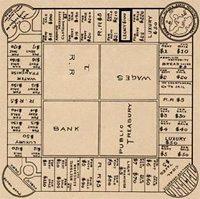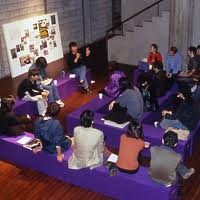
home | links | compass

Tower of Babel. 1928.
by M.C. Escher

Subjectivity–Objectivity
complementarity required for
collaborative intelligence
Subjectivity – our diverse
interpretations and styles of play
Objectivity – shared rules of
the game; given constraints
LINKS
References
AI Game Dev
Center for Serious Play
BFI – World Game
Gamepipe
Jane McGonigal – TED
Innovation Networks
Microbes–Mind Forum
Planet Innovation
von Ahn on Human
Computation
AI Conferences
Animating Time Data
Climate Collab
Darwin papers
Do Some Good
EO Wilson Foundation
Gapminder
Geo-tagger's World Atlas
Howe on Crowdsourcing
Innovation Networks
IRIDIA
Kelly - Hivemind
Kirschner Lab
London Open Street Map
Los Alamos – Symbiotic
Intelligence
Mechanical Turk
MIT Center for
Collective Intelligence
Recommender Systems
SETI @ Home
SIGCHI
SIGEVO
SIGGRAPH
Turner Fieldwork
Vinge on Singularity
Wall Street Journal
BOOKS
![]()
McGonigal – Reality is Broken
![]()
Hansen, Schneiderman,
Smith – Analyzing Social
Networks - Node XL
![]()
J Fodor & M P
What Darwin Got Wrong
![]()
E Jablonka & M Lamb
Evolution in 4D
![]()
M Kirschner & J Gerhart –
Plausibility of Life
![]()
J Scott Turner
Tinkerer's Accomplice
![]()
J Scott Turner
The Extended Organism
![]()
MJ West-Eberhard –
Developmental
Plasticity & Evolution
Games to harness collaborative intelligence |
The focus here is on how games harness and manifest principles of collaborative intelligence and can be used to enhance support systems for collaborative intelligence — non-adversarial, non zero-sum games. See also the discussion of crowd-sourcing and games. |
||||
|
Francis Crick’s Card Game Metaphor, as modified by Zann Gill to illustrate collaborative intelligence, highlights the role of internal pattern recognition in evolution’s advance toward complexity, showing how chance and choice are complementary as the player uses his pattern recognition capabilities to adapt his hand each time he discards a card and draws a new card from the deck. Assume now that the dealer deals out only part of the deck, say seven cards to each player, and puts the rest in the center. The picks up his hand, recognizes what he can do with his hand, discards a card, draws another card and gradually improves his hand until he has a straight flush. What counts is not just the "genetic inheritance" of the hand he's dealt, but what he does with his cards after they’ve been dealt to him. |
|||
Go Computer scientist Eric Baum, author of What is Thought?, which has been compared to Erwin Schrodinger's classic, What is Life?, is tackling this question by programming a computer to play the game of Go, a serious challenge in pattern recognition. Fields Medal winner Edward Witten wrote of the book: "Why can humans rapidly carry out tasks, such as learning to talk or recognizing an object, that seem intractable for computers? According to Eric Baum, the human brain is much like a computer, but it runs programs that are different from the ones usually written by human computer programmers. The programs run by the brain are insightful or 'compressed'; they have built in a good deal of knowledge or 'understanding' about the nature of the world." |
||||
Monopoly Most of us imagine that Monopoly perfectly represents our conventional model of innovation. A single brilliant innovator makes an associative connection, has an aha moment, and presto! a new game is born. He files a patent, licenses his invention to Parker Brothers; the game becomes a hit, and lots of money is made. But this single inventor presto! model is not what occurred. The story of monopoly starts in 1879 when Henry George published Progress and Poverty, a raging best-seller that sold three million copies. Alfred Russell Wallace, who with Charles Darwin co-discovered evolution, passed over Origin of Species to call Progress and Poverty the most important book of the century. Parker Brothers passed over the real inventor to purchase the rights from Clarence Darrow who had appropriated her idea. |
||||
World Game The fifty-year anniversary of the World Game concept in 2011 marks the rise of the Internet, mobile apps, ubiquitous computing, geo-aware systems and social networks, not yet invented in 1961 when Fuller first proposed World Game. Only now could a new World Game vision be implemented using geo-aware technologies, internet-supported collaboration, ubiquitous computing, and increasingly sophisticated social networks to support coordinated decision-making, innovation, responsible entrepreneurship, and worldwide collaboration. Fuller’s vision “to make the world work for 100% of humanity in the shortest possible time through spontaneous cooperation without ecological offense or disadvantage of anyone” (motto of the Buckminster Fuller Institute) could be implemented through World Game — a powerful idea to harness game methods to environmental sustainability challenges. How do we fill in the blanks? |
||||
How did he propose to implement a vision so ambitious? Buckminster Fuller’s 1961 proposal for World Game was a vehicle to stimulate collective brainstorming about how to address global sustainability. In the decades of the 1960s and 1970s large groups met in school gymnasia with butcher paper and colored markers to develop strategies to match world resources to world needs. These sessions raised awareness about the challenges of resource distribution, population growth, and the interconnectedness of global sustainability challenges. For competitive game theoretic approaches, Smith, John Maynard. 1982. The evolution of social behavior classification of models. In Current Problems in Sociobiology. Ed. King’s College Sociobiology Group. Cambridge University Press. 28 – 44. Buckminster Fuller Annual Memorial Lecture. 1997. United States International University. Presentation by Peter Meisen President, Global Energy Network Institute. Retrieved January 22, 2010. Holland, John H. 1993. [1975]. Adaptation in Natural and Artificial Systems. Cambridge, MA: M.l.T. Press.
Zyda, Michael. 2007. “Creating a Science of Games,” Communications of the ACM. July. Vol. 50, No. 7, pp 27- 29. Guest Editor of special issue of CACM on Creating a Science of Games. |
||||
|
||||

Image Credits. Above
Andrew Wuensche, DDL
Random Boolean Networks
Animal Card Game–Will Bullas
Board Design – Lizzie Magie,
The Landlord’s Game.





